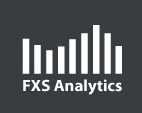I was thinking if I am going to post this article which I wrote some time back. It makes me sound like a indicatorian (Gavipedia: Indicatorian refers to trader who can’t live without indicator). In fact, I hardly look at indicator. Oh well. This is a season of sharing. I am sharing something that I find to be useful. In case, you are interested in Multiple Moving averages ,as mentioned in my previous post ‘Defining a trend”
I take a deeper look at Multiple Moving averages. Though I don’t like the idea of manipulating price by using indicator, I gave it a try and I think it is useful. The basic idea of Multiple moving average(MMA) is to view the trend as two band of moving averages – short term band and long term band. MMA has provided a great visual of trend, but, how should I quantify it in case I need to integrate into my system?
I obtain an idea from Leon Wilson, Author of “The Next step to share trading success”. (I am not sure if the book is available in U.S, at least, I can’t find it in Amazon.) He is an truly “indicatorian”, and according to the description in the book, he trade stocks for living. He derives something called MMACD (MACD of Multiple Moving averages) Ok, here are the steps I quantify MMA by following his suggestion.
1. Take the combined value of moving averages for each short term band and long term bands. So, now we have two lines instead of two bands of moving averages.
2. We want to measure the distance between short term band and long term band. When the distance goes extreme, you know a bubble is forming and potentially we can expect a pull back. I display MMACD into percentage form.
MMACD=[(short term – Long term)/long term]/100
3. For a better view of the changes, we add in a trigger line. We do not want to establish a Long position when MMACD is below its trigger line. (reverse for short position)
trigger= 9-period Moving average of MMACD
So now we have a new indicator to analyzed Multiple Moving average. An Indicator for an indicator? OMG. Well, It is just some mathematics work to help me in reading Multiple moving average. And personally, I find it to be helpful to analyze trend.

I have been using this in swing trading of stocks. And I am looking for the possibility of implementing it in day trading as well. Before you start mesmerizing this MMACD, you gotta understand the concept behind MMA. Check out the links in my previous post “Defining a trend“.
Ok, here is the indicator I have programmed for Tradestation, just in case, some of you are interested in trying out. Pull in GMMA into your chart and MMACD. Observe the behavior. Shoot me some comments if you have other view. Just another tool, dump it if it confused you.


Nice post. This is a very refreshing view.
I use the Guppy MMA for my daily stock screening. One of my favorite pastimes is to experiment with different indicators and I ended up using the MACD on Guppy MMA, though in a different way.
I believe the strongest advantage of Guppy MMA is its ability to indicate when there is disagreement and agreement on price. And a very nice time to enter a trade is when there is “increasing disagreement” – Which essentially means that the moving averages are moving apart after coming close.
Now to how i use the MACD. I have two sets of MACD – (3,15,16) and (30,60,16). You might have noted that the indicator settings are derived from guppy MMA. I like swing trade setups in which the faster MACD is just turning up and the longer MACD indicates a nice steady uptrend. Kind of derived from an analogy of a wave helped up by the tide.
As simple as that :). You will be surprised to note how often it generates some very nice swing trade setups. You may substitute the Faster MACD with the RSI if you want to anticipate setups. The RSI generally turns up one day before the faster MACD.
Nice post. This is a very refreshing view.
I use the Guppy MMA for my daily stock screening. One of my favorite pastimes is to experiment with different indicators and I ended up using the MACD on Guppy MMA, though in a different way.
I believe the strongest advantage of Guppy MMA is its ability to indicate when there is disagreement and agreement on price. And a very nice time to enter a trade is when there is “increasing disagreement” – Which essentially means that the moving averages are moving apart after coming close.
Now to how i use the MACD. I have two sets of MACD – (3,15,16) and (30,60,16). You might have noted that the indicator settings are derived from guppy MMA. I like swing trade setups in which the faster MACD is just turning up and the longer MACD indicates a nice steady uptrend. Kind of derived from an analogy of a wave helped up by the tide.
As simple as that :). You will be surprised to note how often it generates some very nice swing trade setups. You may substitute the Faster MACD with the RSI if you want to anticipate setups. The RSI generally turns up one day before the faster MACD.
Ganesh, Thanks for your comment. Interesting, MACD on Guppy MMA. 🙂
Ganesh, Thanks for your comment. Interesting, MACD on Guppy MMA. 🙂
Interesting post.
And cool looking chart – I could print it and hang it in my office as art!
Have a good weekend!
Interesting post.
And cool looking chart – I could print it and hang it in my office as art!
Have a good weekend!
Hey Trader-X,
Thanks! Have a great weekend too!
Hey Trader-X,
Thanks! Have a great weekend too!